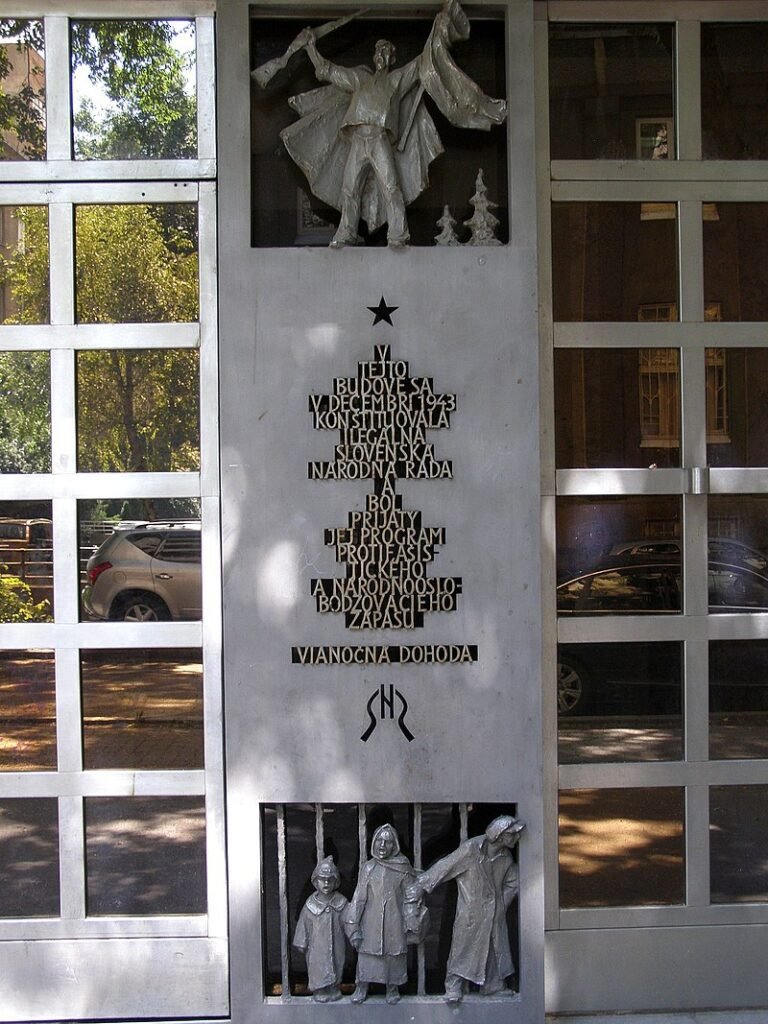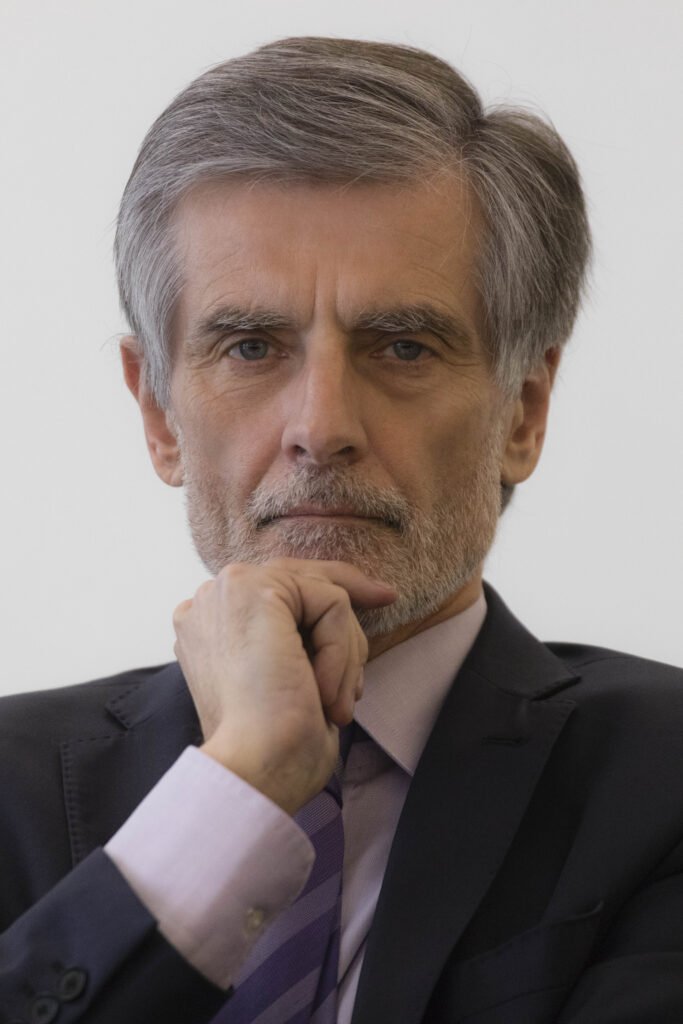
Bratislava before Christmas in 1943, based on which the Slovak National Council (the last in history and still active, at that time illegal) was established. After the Slovak National Uprising (SNP) outbreak in August 1944, the SNR came out of the underground and began to operate on the rebel territory. The Christmas Agreement is a document signed in Bratislava before Christmas 1943, based on which the (in history the last and still operating, at that time illegal) Slovak National Council (SNR) was established. After the Slovak National Uprising (SNP) outbreak in August 1944, the SNR came out of illegality and began to operate in the uprising territory.
Slovak politician and diplomat Peter Weiss writes about the significance of the Christmas Agreement
At 11 Gajova Street, where we gathered before Christmas 2023, many people with anti-fascist convictions, as well as more recent fighters for the rehabilitation of the president of the new Slovak state, Jozef Tiso, the Christmas Agreement was born 80 years ago, precisely on 25 December 1943, in the apartment of the lawyer Matej Josek. Jozef Lettrich and Ján Ursíny drafted it for the civil resistance, and Ladislav Novomeský and Gustáv Husák for the communist resistance. Their party boss, Karol Šmidke, could not attend the meeting in person due to the tightness of the situation.
It was a courageous and, at the same time, well-thought-out act of people operating in strict underground and in danger of their freedom and even their lives. Gradually, other personalities of the resistance, including the social democrat Ivan Horváth, joined the agreement. This document, first published in September 1944, triggered political activities with far-reaching consequences lasting to this day.
Based on the Christmas Agreement, the illegal Slovak National Council was established, which in September 1994 became the bearer of Slovak national identity and statehood. Despite its changing position in the Czechoslovak state’s organ system, it has remained in legal continuity. After adopting the first Slovak democratic constitution on 1 January 1993, it was renamed the National Council of the Slovak Republic.
It was a courageous and, at the same time, well-thought-out act of people operating in strict underground and in danger of personal freedom and even life.
Gradually, other personalities of the resistance, including the social democrat Ivan Horváth, joined the agreement. This document, first published in September 1944, triggered political activities with far-reaching consequences lasting to this day.
Based on the Christmas Agreement, the illegal Slovak National Council was established, which in September 1994 became the bearer of Slovak national identity and statehood. Despite its changing position in the Czechoslovak state’s organ system, it has remained in legal continuity. After adopting the first Slovak democratic constitution on 1 January 1993, it was renamed the National Council of the Slovak Republic.

The Christmas Agreement began a complex political and, subsequently, state-legal development. It resulted in today’s independent Slovak Republic. The participants in this agreement were aware that the Slovak state, created after the disintegration of the Czechoslovak Republic under Hitler’s pressure, had no chance of existence after the war. The Christmas Agreement was the beginning of a complex political and, subsequently, state-legal development. It resulted in today’s independent Slovak Republic. The participants in this agreement were aware that the Slovak state, created after the disintegration of the Czechoslovak Republic under Hitler’s pressure, had no chance of existence after the war. None of the allies of the tremendous anti-fascist coalition wanted it. Even the Czechoslovak foreign resistance rejected it. The only realistic way was to sign up for the restoration of the Czechoslovak Republic. However, the Christmas Agreement did so with the condition that its conditions would be based on the principle of “equal with equal”.
Thus, the idea of federalising the unitary Czechoslovak Socialist Republic was born.
After 24 years of brutal political struggles, the Constitutional Act on the Czechoslovak Federation was approved on 27 October 1968. Based on this, as of 1 January 1969, the Slovak and Czech Republic were established as parts of the federation. After fifty years, this state-law arrangement replaced the unitary Czechoslovak statehood. In 1992, a constitutional law dissolved the Czech and Slovak Federative Republic in the same way as it was established. Since 1 January 1993, the Slovak Republic and the Czech Republic have been separate independent subjects of international law.
Thirdly, the Christmas Agreement triggered preparations for the Slovak National Uprising against the home-grown fascist totalitarian regime, which was based on racial hatred and which had collaborated with Nazi Germany from the outset. At the same time, it was an uprising against German Nazism. It made the Slovak nation one of the victors of the Second World War and atoned to a large extent for the crimes of the Tiso’s People’s Republic regime. The Slovak National Uprising, the cradle of which is the Christmas Agreement, has become a milestone in the modern history of Slovakia. It is an irreplaceable source of our national pride.

The SNP gave birth to three traditions. The first is the military. The Slovak participants in the uprising – soldiers and partisans – fought heroically and bravely against overwhelming German odds in cooperation with resistance fighters from more than thirty other nations.
Peter Weiss (* 7 July 1952, Bratislava) is a Slovak leftist politician and university teacher, from 2009 to 2013 Ambassador to Hungary from 2013 to 2020 Ambassador to the Czech Republic.

Be the first to comment